
Processes and Services
Do You Have A Question Relating To A Process or Service We Offer?Austin Plastics & Supply Can Provide The Information You Need.
PROCESSES AND SERVICES
Austin Plastics and Supply uses processes including adhesive or solvent bonding of acrylics, heat welding or bending, cnc routing, drilling, screenprinting and polishing and buffing. We also offer a cut while you wait service.
Processes and services we offer are vital to how plastics are assembled and shaped.
Our experienced team is qualified and performs these services quickly and efficiently.
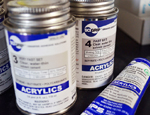
Adhesive/Solvent Bonding- Adhesive glue is simply applied to mating surfaces, and the sections are joined. The adhesive sets in a few minutes. Its resistance to high temperatures, chemicals and solvents is poor. Therefore, bonding with adhesive glue may diminish the performance of some parts. So, it is recommended for concept models and form and fit prototypes rather than functional prototypes or manufactured parts. Solvent bonding works by chemically melting the plastic on the surfaces to be joined. The solvent can be brushed onto sections that are then mated and clamped together, or it can be injected into a pre–mated joint or existing crack. The water-thin solvent wicks into the part surface, which improves the strength of the repair or bond. Like adhesive glue, the process is simple, and the bond sets in seconds. Another similarity is that it can be applied to hard-to-reach areas since the solvent will wick into a seam or fracture.
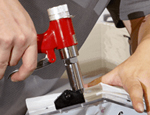
Assembly- Acrylic plastics can be joined successfully in a number of different ways, including mechanical fastenings, ultrasonic assembly, metal inserts, snap fits, electromagnetic and heat welding and solvent/adhesive bonding. Good assemblies require a working knowledge of the plastic resin you have selected, a fundamental knowledge of good joint design, a thorough understanding of the purpose, geometry, ambient environment, chemicals, and mechanical loading which your assembly will encounter.
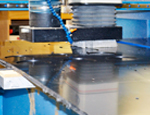
CNC Precise Machining and Routing- A computer-controlled cutting machine used for cutting different types of hard materials, such as wood, composites, aluminum, steel, plastics, and foams. CNC stands for computer numerical control. CNC routers can perform the tasks of carpentry shop machines such as the panel saw, spindle moulder, and boring machine. They can also cut mortises and tenons. A CNC router tool paths are controlled via computer numerical control. It typically produces consistent and high-quality work and improves factory productivity. Unlike a jig router, the CNC router can produce a one-off as effectively as repeated identical production. Key benefits of a CNC router is automation and precision. Another benefit of a CNC router is waste reduction, frequency of errors, and the time a finished product takes to get to the customer.

Cutting- For straight cuts in acrylic, a plastic-scoring blade can be used or you can cut acrylic with more traditional blade tools such as a jigsaw, band saw, or table saw. High tooth-count plastic-cutting blades are available for these tools, and are recommended.
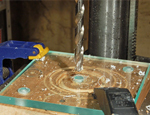
Drilling- Drilling a sheet of acrylic with conventional metal or wood drill bits, can cause cracking. We recommend using a special acrylic drill bit. However if you do not have these specialty drill bits we can recommend the following procedures. If using a thin sheet, a step drill will be needed. If working with a thick piece of acrylic, you can use conventional drill bits. You must first place a piece of masking tape over the area to be drilled. If the hole is especially thick, spray some WD-40 to act as a lubricant. This will help remove chips and dissipate heat as the hole is drilled.

Engraving To Include: Indoor Signage, Nametags, Desk Plates, HVAC Tags, Cable Tags, Legend Plates, Control Panels, Receptacles, Safety Signs, Switch Plates and Other Items Used By Electricians. Plastic products can be marked either with super-fast laser marking, which works to simply discolor plastic surfaces by destroying color pigments in molecules, with laser foaming, which is used to create light marking on a dark plastic surface, or with actual laser etching. Plastic materials that are thicker and denser, like acrylic, will often be etched, and the process can be used to create photographic detail on a thick surface. Regardless of the type of plastic and the type of image you want to use, the creation process can be easy and smooth.
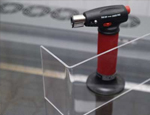
Heat Bending- Using a strip heater, acrylic can be heated and bent at different angles. Heaters can be fairly pricey and we recommend these alternative options. Using a toaster oven, set to about 200º and leave the door slightly ajar. Place the part of the acrylic to be bent just above the open door, wait for it to soften enough, and then bend it to the angle desired. A heat gun can also be used with caution to heat the acrylic. If using these alternative methods, bend the acrylic against the edge of a piece of wood or metal for straight, clean corners.
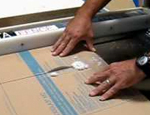
Plastic Cut While You Wait- We offer a great service of cutting your plastic products while you wait. This is especially important if you are in a hurry and have a rush order that needs to be filled.
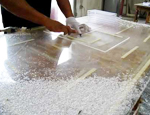
Plastic Welding- Plastic welding is the process of creating a molecular bond between two compatible thermoplastics. Welding offers superior strength, and often drastically reduced cycle times, to mechanical joining (snap fits, screws) and chemical bonding (adhesives). Welds have three main steps: pressing, heating, and cooling. Pressure is used to keep the parts in the proper orientation and to improve melt flow across the interface, and is often used throughout both the heating and cooling stages.

Polishing: Buffing & Flame- Flame Polishing uses a hot flame to flow a plastic surface. When done properly, flame plastic polishing produces the clearest finish, especially when polishing acrylic. Flat external surfaces are the most applicable configuration for this method. Buffing typically uses a cotton wheel with a cutting compound and is appropriate where focus is on aesthetics. When viewed at magnification, the buffing wheel actually produces fine multidirectional scratches, limiting its ability to produce true clarity. In addition, all methods require annealing to avoid stress cracks. Plastic and acrylic polished components without annealing have a high probability of cracking in operation.

Silkscreen: 1 Color- This process is also called silkscreen. It is a printmaking technique in which a mesh cloth is stretched over a heavy wooden frame and the design is printed by having a squeegee force color through the pores of the material in areas not blocked out by a glue sizing.

Thermoforming: Polypropylene & HDPE Welding- Thermoforming is a process where a plastic sheet is heated to a pliable forming temperature, formed to a specific shape in a mold, and trimmed to creating a product consumers can use.
Austin Plastics & Supply
2415 Kramer Ln, Ste B, Austin, Texas 78758
Phone: (512) 836-1025 or Email: [email protected]
